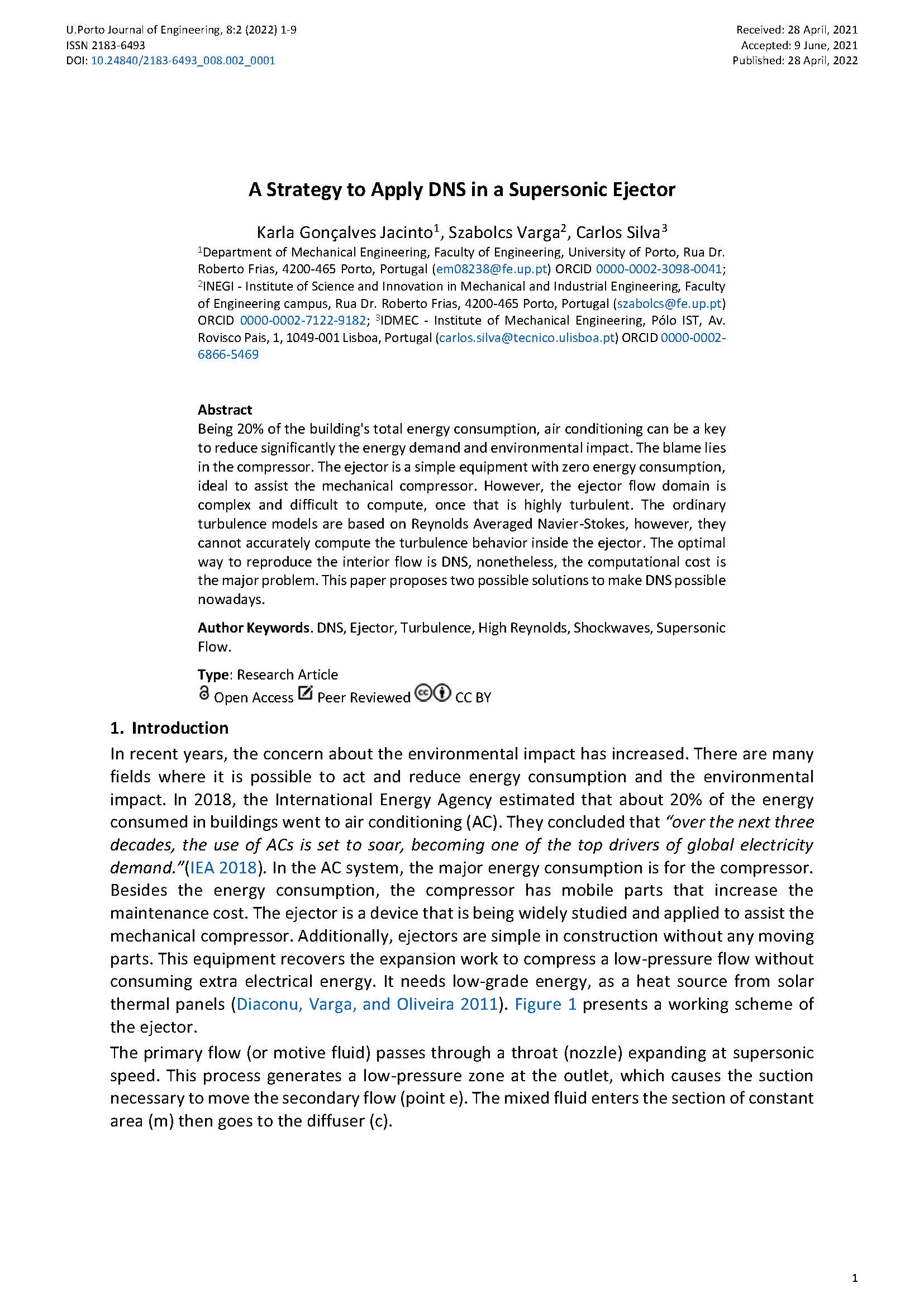A Strategy to Apply DNS in a Supersonic Ejector
Main Article Content
Abstract
Being 20% of the building's total energy consumption, air conditioning can be a key to reduce significantly the energy demand and environmental impact. The blame lies in the compressor. The ejector is a simple equipment with zero energy consumption, ideal to assist the mechanical compressor. However, the ejector flow domain is complex and difficult to compute, once that is highly turbulent. The ordinary turbulence models are based on Reynolds Averaged Navier-Stokes, however, they cannot accurately compute the turbulence behavior inside the ejector. The optimal way to reproduce the interior flow is DNS, nonetheless, the computational cost is the major problem. This paper proposes two possible solutions to make DNS possible nowadays.
Downloads
Article Details

This work is licensed under a Creative Commons Attribution 4.0 International License.
Authors who publish with this journal agree to the following terms:
- Authors retain copyright and grant the journal right of first publication with the work simultaneously licensed under a Creative Commons Attribution License that allows others to share the work with an acknowledgement of the work's authorship and initial publication in this journal.
- Authors grant the journal the rights to provide the article in all forms and media so the article can be used on the latest technology even after publication and ensure its long-term preservation.
- Authors are able to enter into separate, additional contractual arrangements for the non-exclusive distribution of the journal's published version of the work (e.g., post it to an institutional repository or publish it in a book), with an acknowledgement of its initial publication in this journal.
- Authors are permitted and encouraged to post their work online (e.g., in institutional repositories or on their website) prior to and during the submission process, as it can lead to productive exchanges, as well as earlier and greater citation of published work (See The Effect of Open Access).

